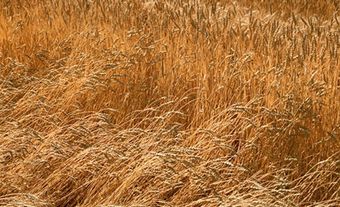Margarine
Margarine (oleomargarine) is a butter substitute consisting mainly of refined, hydrogenated vegetable oils (canola and soybean), milk powder and water, with added salt, preservatives, emulsifiers, vitamins A and D, artificial flavour and vegetable colour. The soluble and insoluble ingredients are processed and heated in separate vats, then churned to form an emulsion, which is passed through heat exchangers to be cooled and hardened.
Invented by a Frenchman, Hyppolite Mège-Mouries, in 1869, margarine was soon patented and manufactured in many countries. Originally, beef fat and lard were used but later, with modern processing techniques, vegetable oils were introduced. More recently, concern about the role of saturated fats and oils in health has brought a greater use of polyunsaturated oils.
Dairy farmers vigorously opposed the sale of margarine, and as a result it was regulated or prohibited in many countries. In Canada, the manufacture and sale of margarine was forbidden by an Act of Parliament in 1886. The ban was enforced until 1917, when wartime shortages of butter brought legalization; it was banned again in 1923. A lengthy conflict persisted between farmers and consumers, so that margarine did not become permanently legal until 1948, when Parliament referred the issue to the Supreme Court. Despite federal law, some provinces forbade the colouring of margarine; today the provinces permit it but control the colour.
Production in Canada began quickly, rising from about 53,000 t in 1954 to 129,000 t in 1986. The output would be much greater if margarine were available in restaurants, but provincial laws require that eating places which serve margarine must display in large letters "Oleomargarine is served here." Thus the Canadian dairy farmer still has a measure of protection.

 Share on Facebook
Share on Facebook Share on X
Share on X Share by Email
Share by Email Share on Google Classroom
Share on Google Classroom

